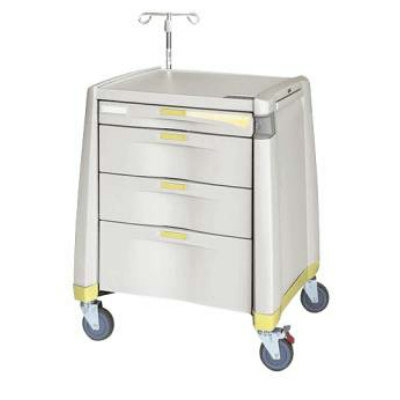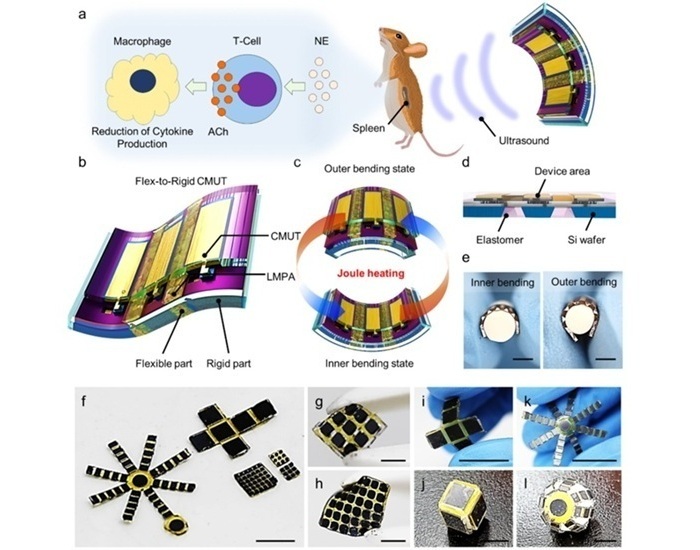Global Endoscopy Devices Market Adopts New Trends
|
By HospiMedica International staff writers Posted on 28 Jul 2014 |
Consistent technological advances have added new products to the global endoscopy devices market and expanded its boundaries. These are the latest findings of Transparency Market Research (Albany, NY, USA), a global market intelligence company.
Endoscopy procedures can be diagnostic as well as operative, and since they are minimally invasive procedures, they provide various advantages over open surgery such as reduced blood loss, reduced chances of infection, shorter hospital stay, and quick recovery. Due to these advantages, the adoption of endoscopy is increasing rapidly in various areas of surgery including gastrointestinal (GI), urological, ear, nose, and throat (ENT), cardiovascular, joint surgeries, and especially in the field of oncology.
Modern endoscopes, also known as videoscopes, deliver better image quality and are more durable than conventional fiberoptic endoscopes, which get damaged easily. This is a major driver for the market, and the technology is expected to replace fiberoptic and rod-lens systems in the near future. Another revolution in the endoscopy market is the capsule endoscope, which possesses a built-in camera unit and wireless transmission system to deliver high quality images to external receiver as they pass through the gastrointestinal tract. Given Imaging (recently acquired by Covidien) accounts for about 85% of the global capsule endoscopy market share.
The development of chromoendoscopy has added another dimension to the evolving market of endoscopy. Three dimensional (3D) camera systems have improved the depth perception and hence reduced errors during surgery, further reducing overall surgery time. Other developments, such endoscopic ultrasound devices, allow doctors to effectively diagnose the intestinal tract, difficult to diagnose with traditional ultrasound devices. But some factors impede the acceptance of several endoscopic devices; prominent among these is the high cost of latest technology devices, which has delayed penetration in developing countries. Lack of skilled professionals is also a major concern for the market to develop.
Considering various market dynamics, companies are eying Asian countries such as India, China, and Japan for lucrative opportunities. Rapidly developing economic condition, improving healthcare sector, available disposable income, and large consumer base to high prevalence of disease will drive the endoscopy devices market in these countries. According to Transparency Market Research, the global endoscopy devices market was valued at USD 24.9 billion in 2012, and is expected to grow at a compound annual growth rate (CAGR) of 6.8%, to reach an estimated value of USD 36.9 billion in 2019.
An endoscopy system is comprised of an endoscope; a visualization system, including a camera, control unit, illumination devices, image processing devices, and a display; and various specialized operative instruments, such as energy systems, suction/irrigation systems, access devices, operative hand instruments, comprised of various hand held devices such as graspers, forceps, suture passers, scissors and others. Other potential devices that can be mounted include insufflation devices, wound protector, and snares.
Related Links:
Transparency Market Research
Endoscopy procedures can be diagnostic as well as operative, and since they are minimally invasive procedures, they provide various advantages over open surgery such as reduced blood loss, reduced chances of infection, shorter hospital stay, and quick recovery. Due to these advantages, the adoption of endoscopy is increasing rapidly in various areas of surgery including gastrointestinal (GI), urological, ear, nose, and throat (ENT), cardiovascular, joint surgeries, and especially in the field of oncology.
Modern endoscopes, also known as videoscopes, deliver better image quality and are more durable than conventional fiberoptic endoscopes, which get damaged easily. This is a major driver for the market, and the technology is expected to replace fiberoptic and rod-lens systems in the near future. Another revolution in the endoscopy market is the capsule endoscope, which possesses a built-in camera unit and wireless transmission system to deliver high quality images to external receiver as they pass through the gastrointestinal tract. Given Imaging (recently acquired by Covidien) accounts for about 85% of the global capsule endoscopy market share.
The development of chromoendoscopy has added another dimension to the evolving market of endoscopy. Three dimensional (3D) camera systems have improved the depth perception and hence reduced errors during surgery, further reducing overall surgery time. Other developments, such endoscopic ultrasound devices, allow doctors to effectively diagnose the intestinal tract, difficult to diagnose with traditional ultrasound devices. But some factors impede the acceptance of several endoscopic devices; prominent among these is the high cost of latest technology devices, which has delayed penetration in developing countries. Lack of skilled professionals is also a major concern for the market to develop.
Considering various market dynamics, companies are eying Asian countries such as India, China, and Japan for lucrative opportunities. Rapidly developing economic condition, improving healthcare sector, available disposable income, and large consumer base to high prevalence of disease will drive the endoscopy devices market in these countries. According to Transparency Market Research, the global endoscopy devices market was valued at USD 24.9 billion in 2012, and is expected to grow at a compound annual growth rate (CAGR) of 6.8%, to reach an estimated value of USD 36.9 billion in 2019.
An endoscopy system is comprised of an endoscope; a visualization system, including a camera, control unit, illumination devices, image processing devices, and a display; and various specialized operative instruments, such as energy systems, suction/irrigation systems, access devices, operative hand instruments, comprised of various hand held devices such as graspers, forceps, suture passers, scissors and others. Other potential devices that can be mounted include insufflation devices, wound protector, and snares.
Related Links:
Transparency Market Research
Latest Business News
- Philips and Masimo Partner to Advance Patient Monitoring Measurement Technologies
- B. Braun Acquires Digital Microsurgery Company True Digital Surgery
- CMEF 2025 to Promote Holistic and High-Quality Development of Medical and Health Industry
- Bayer and Broad Institute Extend Research Collaboration to Develop New Cardiovascular Therapies
- Medtronic Partners with Corsano to Expand Acute Care & Monitoring Portfolio in Europe
- Expanded Collaboration to Transform OR Technology Through AI and Automation
- Becton Dickinson to Spin Out Biosciences and Diagnostic Solutions Business
- Boston Scientific Acquires Medical Device Company SoniVie
- 2026 World Hospital Congress to be Held in Seoul
- Teleflex to Acquire BIOTRONIK’s Vascular Intervention Business
- Philips and Mass General Brigham Collaborate on Improving Patient Care with Live AI-Powered Insights
- Arab Health 2025 Celebrates Landmark 50th Edition
- Boston Scientific Acquires Medical Device Company Intera Oncology
- MEDICA 2024 to Highlight Hot Topics of MedTech Industry
- Start-Ups To Once Again Play Starring Role at MEDICA 2024
- Boston Scientific to Acquire AFib Ablation Company Cortex
Channels
Critical Care
view channel
Glowing Bacteria ‘Pills’ for Detecting Gut Diseases Could Eliminate Colonoscopies
Diagnosing gastrointestinal diseases such as colitis and colorectal cancer often relies on colonoscopy, an invasive procedure that many patients avoid despite ongoing symptoms like bleeding, cramping, and diarrhoea.... Read more
Skin-Permeable Polymer Patch Delivers Insulin Non-Invasively Through Skin
Managing diabetes requires regular insulin delivery, but injections remain invasive and burdensome for patients. While transdermal drug delivery works well for small molecules, the skin acts as a strong... Read more
Nanogel Technology Almost 100% Effective in Destroying Drug-Resistant Bacteria Within Hours
Antibiotic resistance is one of the most serious global health threats, driven by bacteria that evade treatment and form protective biofilms that shield them from drugs. Pathogens such as Pseudomonas aeruginosa,... Read moreSurgical Techniques
view channelNovel Endoscopy Technique Provides Access to Deep Lung Tumors
Detecting lung cancer early can save lives, but diagnosing small tumors deep in the outer regions of the lungs remains a major clinical challenge. Although CT scans frequently identify tiny suspicious... Read more
New Study Findings Could Halve Number of Stent Procedures
When a coronary artery becomes acutely blocked during a heart attack, opening it immediately is essential to prevent irreversible damage. However, many patients also have other narrowed vessels that appear... Read morePatient Care
view channel
Revolutionary Automatic IV-Line Flushing Device to Enhance Infusion Care
More than 80% of in-hospital patients receive intravenous (IV) therapy. Every dose of IV medicine delivered in a small volume (<250 mL) infusion bag should be followed by subsequent flushing to ensure... Read more
VR Training Tool Combats Contamination of Portable Medical Equipment
Healthcare-associated infections (HAIs) impact one in every 31 patients, cause nearly 100,000 deaths each year, and cost USD 28.4 billion in direct medical expenses. Notably, up to 75% of these infections... Read more
Portable Biosensor Platform to Reduce Hospital-Acquired Infections
Approximately 4 million patients in the European Union acquire healthcare-associated infections (HAIs) or nosocomial infections each year, with around 37,000 deaths directly resulting from these infections,... Read moreFirst-Of-Its-Kind Portable Germicidal Light Technology Disinfects High-Touch Clinical Surfaces in Seconds
Reducing healthcare-acquired infections (HAIs) remains a pressing issue within global healthcare systems. In the United States alone, 1.7 million patients contract HAIs annually, leading to approximately... Read moreHealth IT
view channel
EMR-Based Tool Predicts Graft Failure After Kidney Transplant
Kidney transplantation offers patients with end-stage kidney disease longer survival and better quality of life than dialysis, yet graft failure remains a major challenge. Although a successful transplant... Read more
















